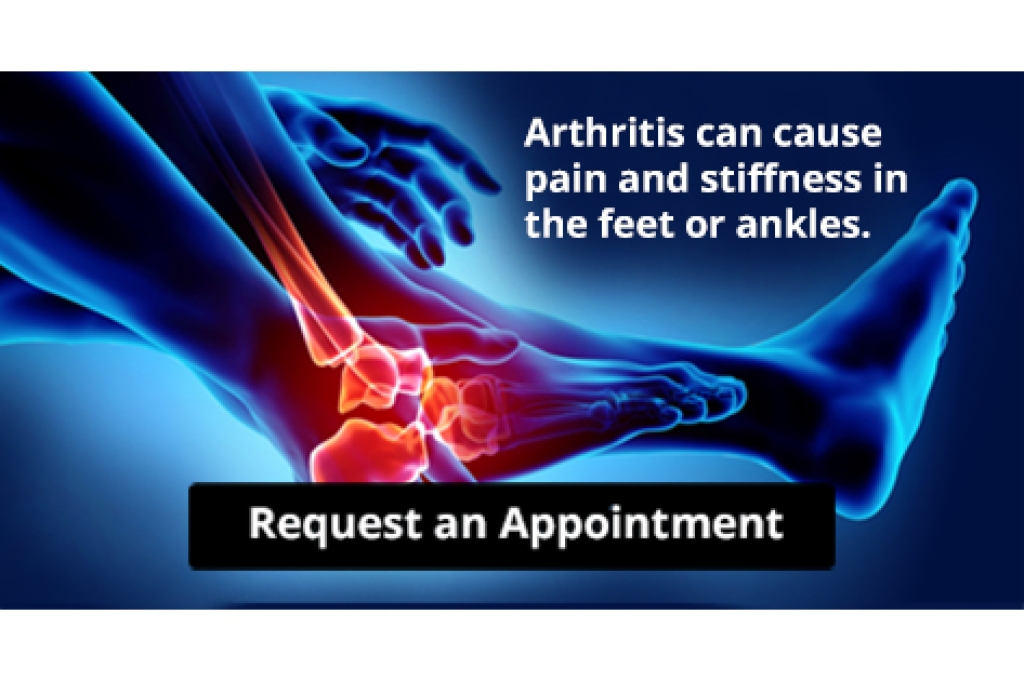Connect With Us
Blog
Blog
Two Types of Toe Fractures
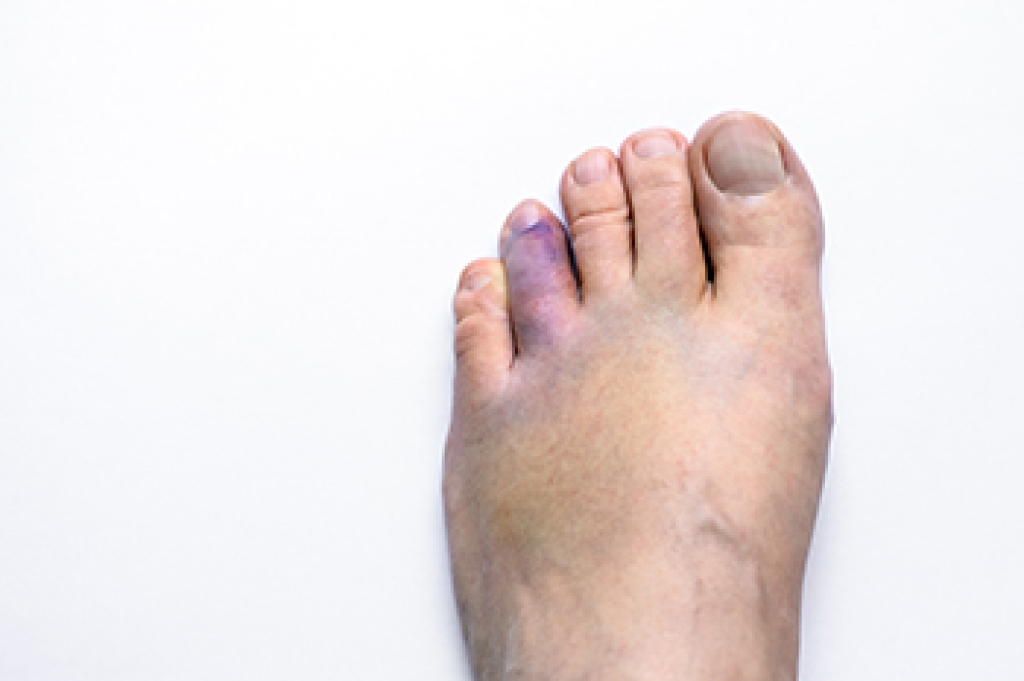
There are different ways of fracturing a toe. A sudden increase in running or walking can produce a stress or hairline fracture, and can be uncomfortable. When a heavy object is dropped on it, or if it is jammed against a piece of furniture, it is considered to be more of a serious fracture, and there are noticeable symptoms that a break has occurred. These can include immediate bruising, and swelling, and the affected toe bone may protrude from the skin. If the break is very painful, a popping sound may be heard at the time of the injury. There is often a limited range of motion, and it can be difficult to walk. A proper diagnosis often consists of having an X-ray taken, and this is generally successful in determining how severe the break is. Many broken toes are treated by using the buddy taping method. This involves taping the broken toe to the toe next to it, which can provide the stability that is needed as the healing process occurs. If you have broken your toe, it is strongly suggested that you schedule an appointment with a podiatrist as quickly as possible, so the toe can heal correctly.
A broken toe can be very painful and lead to complications if not properly fixed. If you have any concerns about your feet, contact Andrew Katz, DPM from Allcare Foothealth Center. Our doctor will treat your foot and ankle needs.
What to Know About a Broken Toe
Although most people try to avoid foot trauma such as banging, stubbing, or dropping heavy objects on their feet, the unfortunate fact is that it is a common occurrence. Given the fact that toes are positioned in front of the feet, they typically sustain the brunt of such trauma. When trauma occurs to a toe, the result can be a painful break (fracture).
Symptoms of a Broken Toe
- Throbbing pain
- Swelling
- Bruising on the skin and toenail
- The inability to move the toe
- Toe appears crooked or disfigured
- Tingling or numbness in the toe
Generally, it is best to stay off of the injured toe with the affected foot elevated.
Severe toe fractures may be treated with a splint, cast, and in some cases, minor surgery. Due to its position and the pressure it endures with daily activity, future complications can occur if the big toe is not properly treated.
If you have any questions, please feel free to contact our office located in Palmdale, CA . We offer the newest diagnostic and treatment technologies for all your foot care needs.
Athlete’s Foot Is a Common Foot Infection
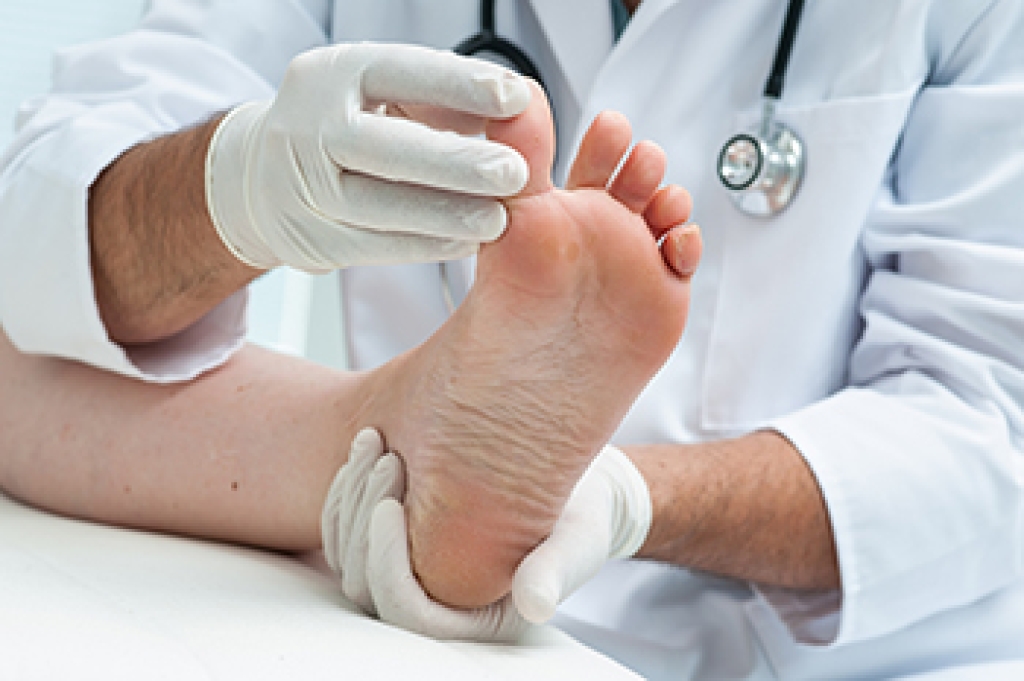
Athlete’s foot, also referred to as tinea pedis, is a fungal infection that affects the skin on the feet. It is often seen between the toes first. The name, athlete’s foot, came into being because it was a common affliction of athletes with sweaty feet in tight-fitting shoes. The fungus likes warm, moist environments so wearing damp socks or coming into contact with contaminated surfaces, such as locker room floors and swimming pool areas, make for perfect hosts. Symptoms of athlete’s foot include dry skin on the side or bottom of the foot, a burning and stinging sensation, blisters, and itchiness. Athlete’s foot must be treated because of its potential of spreading the infection to other areas of the body and can cause pain. If you suspect you might have athlete’s foot, see a podiatrist who can confirm the diagnosis, determine what type of fungus caused it, and provide treatment.
Athlete’s foot is an inconvenient condition that can be easily reduced with the proper treatment. If you have any concerns about your feet and ankles, contact Andrew Katz, DPM from Allcare Foothealth Center. Our doctor will treat your foot and ankle needs.
Athlete’s Foot: The Sole Story
Athlete's foot, also known as tinea pedis, can be an extremely contagious foot infection. It is commonly contracted in public changing areas and bathrooms, dormitory style living quarters, around locker rooms and public swimming pools, or anywhere your feet often come into contact with other people.
Solutions to Combat Athlete’s Foot
- Hydrate your feet by using lotion
- Exfoliate
- Buff off nails
- Use of anti-fungal products
- Examine your feet and visit your doctor if any suspicious blisters or cuts develop
Athlete’s foot can cause many irritating symptoms such as dry and flaking skin, itching, and redness. Some more severe symptoms can include bleeding and cracked skin, intense itching and burning, and even pain when walking. In the worst cases, Athlete’s foot can cause blistering as well. Speak to your podiatrist for a better understanding of the different causes of Athlete’s foot, as well as help in determining which treatment options are best for you.
If you have any questions please feel free to contact our office located in Palmdale, CA . We offer the newest diagnostic and treatment technologies for all your foot and ankle needs.
Dealing With Diabetic Foot Ulcers
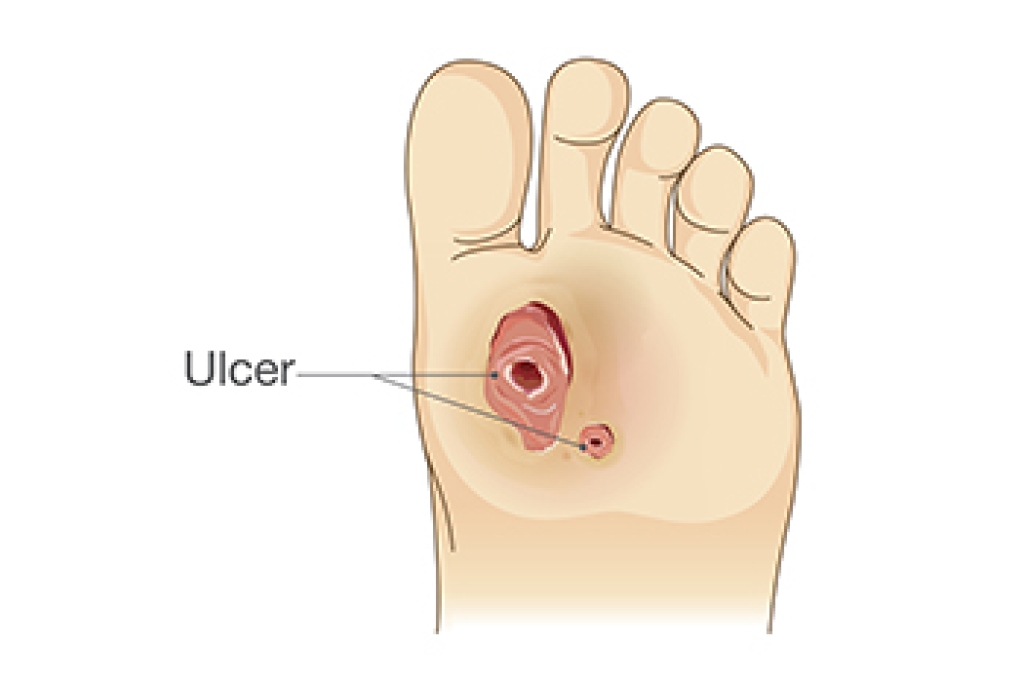
One side effect of diabetes is the increased chance of having sores or wounds on the feet that do not heal properly. If not attended to quickly, these sores can develop into what is known as a diabetic foot ulcer. Research shows that about 20 percent of diabetics have a foot ulcer, and half of the ulcers will become infected. One of the reasons foot ulcers develop is nerve damage caused by high blood sugar levels. The most common locations for ulcers are under the big toe and the ball of the foot, which are often difficult to examine. A foot ulcer that is not treated can spread to the bones or joints and it may develop into gangrene. Prevention of foot ulcers is essential for diabetics. Measures include keeping the feet clean and dry, checking for sores or cuts, and wearing appropriate shoes. If you have diabetes and have noticed numbness in the feet, please contact a podiatrist who can offer treatment solutions.
Diabetic foot care is important in preventing foot ailments such as ulcers. If you are suffering from diabetes or have any other concerns about your feet, contact Andrew Katz, DPM from Allcare Foothealth Center. Our doctor can provide the care you need to keep you pain-free and on your feet.
Diabetic Foot Care
Diabetes affects millions of people every year. The condition can damage blood vessels in many parts of the body, especially the feet. Because of this, taking care of your feet is essential if you have diabetes, and having a podiatrist help monitor your foot health is highly recommended.
The Importance of Caring for Your Feet
- Routinely inspect your feet for bruises or sores.
- Wear socks that fit your feet comfortably.
- Wear comfortable shoes that provide adequate support.
Patients with diabetes should have their doctor monitor their blood levels, as blood sugar levels play such a huge role in diabetic care. Monitoring these levels on a regular basis is highly advised.
It is always best to inform your healthcare professional of any concerns you may have regarding your feet, especially for diabetic patients. Early treatment and routine foot examinations are keys to maintaining proper health, especially because severe complications can arise if proper treatment is not applied.
If you have any questions, please feel free to contact our office located in Palmdale, CA . We offer the newest diagnostic and treatment technologies for all your foot care needs.
Best Shoes for People With Heel Spurs
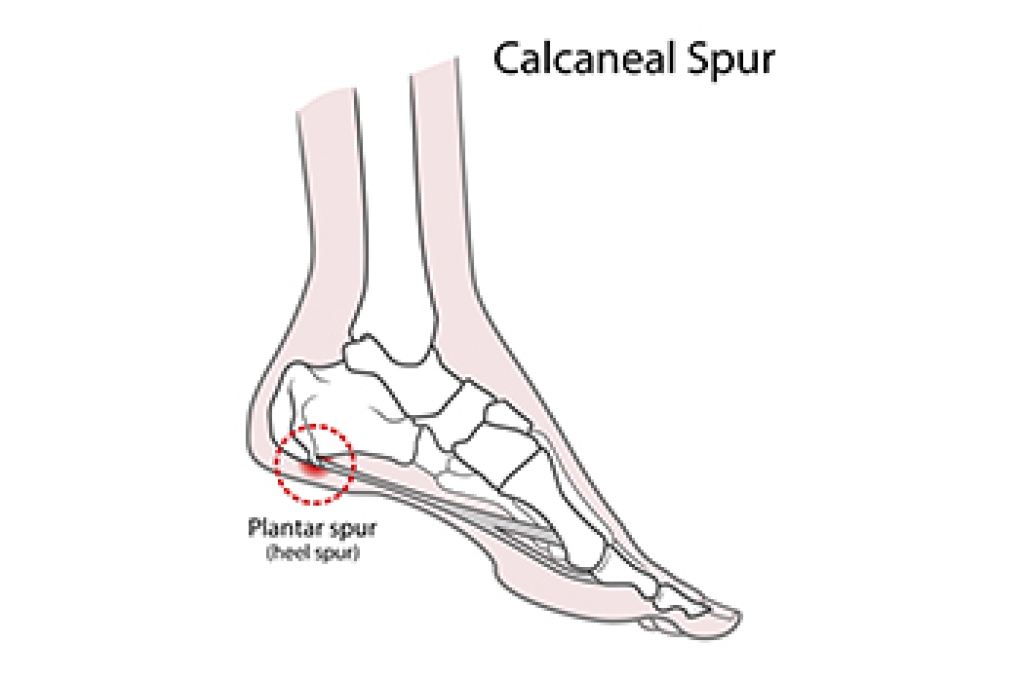
Heel spurs are small, bony growths caused by excessive calcium deposits forming on the heel of the foot. These can grow on the bottom of the heel or the heel bone where the plantar fascia ligament attaches the heel to the toes. This connective tissue keeps the foot in a comfortable arch position, but a heel spur can damage the fibrous tissue and it will not be able to perform its job. In addition to causing every step one takes to be painful, heel spurs can cause long-term foot problems. Trying to purchase shoes that accommodate heel spurs can be an overwhelming task, yet it is imperative to wear proper footwear. When choosing footwear to alleviate pain and prevent further damage from heel spurs, it is crucial to look for shoes with firm rearfoots or backs of shoes. These are less apt to bend during movement and thus provide more support to the heel. Shoes should also have additional cushioning and a flexible forefoot that bends and stretches easily with movement. If you suffer from heel spurs, consult with a podiatrist who can help you with treating this condition, as well as suggest the best footwear to help with pain and prevention.
Heel spurs can be incredibly painful and sometimes may make you unable to participate in physical activities. To get medical care for your heel spurs, contact Andrew Katz, DPM from Allcare Foothealth Center. Our doctor will do everything possible to treat your condition.
Heels Spurs
Heel spurs are formed by calcium deposits on the back of the foot where the heel is. This can also be caused by small fragments of bone breaking off one section of the foot, attaching onto the back of the foot. Heel spurs can also be bone growth on the back of the foot and may grow in the direction of the arch of the foot.
Older individuals usually suffer from heel spurs and pain sometimes intensifies with age. One of the main condition's spurs are related to is plantar fasciitis.
Pain
The pain associated with spurs is often because of weight placed on the feet. When someone is walking, their entire weight is concentrated on the feet. Bone spurs then have the tendency to affect other bones and tissues around the foot. As the pain continues, the feet will become tender and sensitive over time.
Treatments
There are many ways to treat heel spurs. If one is suffering from heel spurs in conjunction with pain, there are several methods for healing. Medication, surgery, and herbal care are some options.
If you have any questions, please feel free to contact our office located in Palmdale, CA . We offer the newest diagnostic and treatment technologies for all your foot care needs.
Dressing a Wound
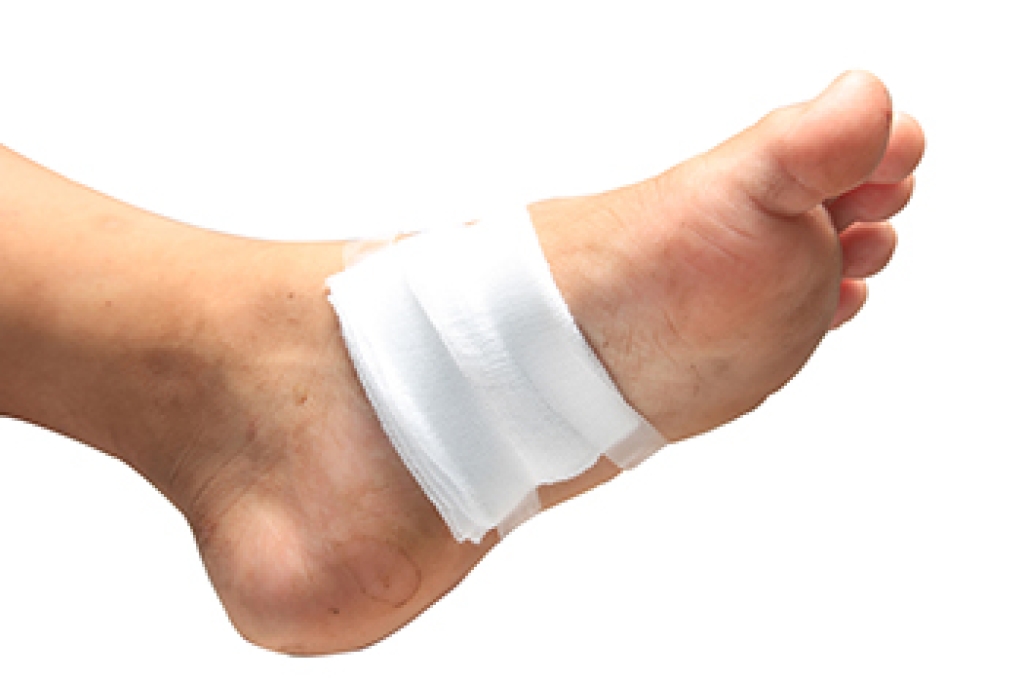
Individuals who suffer from diabetes will sometimes develop foot ulcers, which are open sores or lesions that take time to heal. One way that a diabetic might consider managing their ulcers is by properly dressing them. The purpose of this technique is to ultimately reduce symptoms and facilitate healing. Importantly, dressings are not meant to be permanent. A diabetic patient can change these dressings on a regular and frequent basis to inspect the ulcer. There are several different kinds of dressings. For example, one might opt to use non-adhesive dressings, foam and alginate dressings, and hydrogels. However, whichever dressings a diabetic chooses will be largely dependent on their needs and the peculiarities of their ulcers. Contact a podiatrist today for more information.
Wound care is an important part in dealing with diabetes. If you have diabetes and a foot wound or would like more information about wound care for diabetics, consult with Andrew Katz, DPM from Allcare Foothealth Center. Our doctor will assess your condition and provide you with quality foot and ankle treatment.
What Is Wound Care?
Wound care is the practice of taking proper care of a wound. This can range from the smallest to the largest of wounds. While everyone can benefit from proper wound care, it is much more important for diabetics. Diabetics often suffer from poor blood circulation which causes wounds to heal much slower than they would in a non-diabetic.
What Is the Importance of Wound Care?
While it may not seem apparent with small ulcers on the foot, for diabetics, any size ulcer can become infected. Diabetics often also suffer from neuropathy, or nerve loss. This means they might not even feel when they have an ulcer on their foot. If the wound becomes severely infected, amputation may be necessary. Therefore, it is of the upmost importance to properly care for any and all foot wounds.
How to Care for Wounds
The best way to care for foot wounds is to prevent them. For diabetics, this means daily inspections of the feet for any signs of abnormalities or ulcers. It is also recommended to see a podiatrist several times a year for a foot inspection. If you do have an ulcer, run the wound under water to clear dirt from the wound; then apply antibiotic ointment to the wound and cover with a bandage. Bandages should be changed daily and keeping pressure off the wound is smart. It is advised to see a podiatrist, who can keep an eye on it.
If you have any questions please contact our office located in Palmdale, CA . We offer the newest diagnostic and treatment technologies for all your foot and ankle needs.
Simple Methods to Maintain Healthy Feet
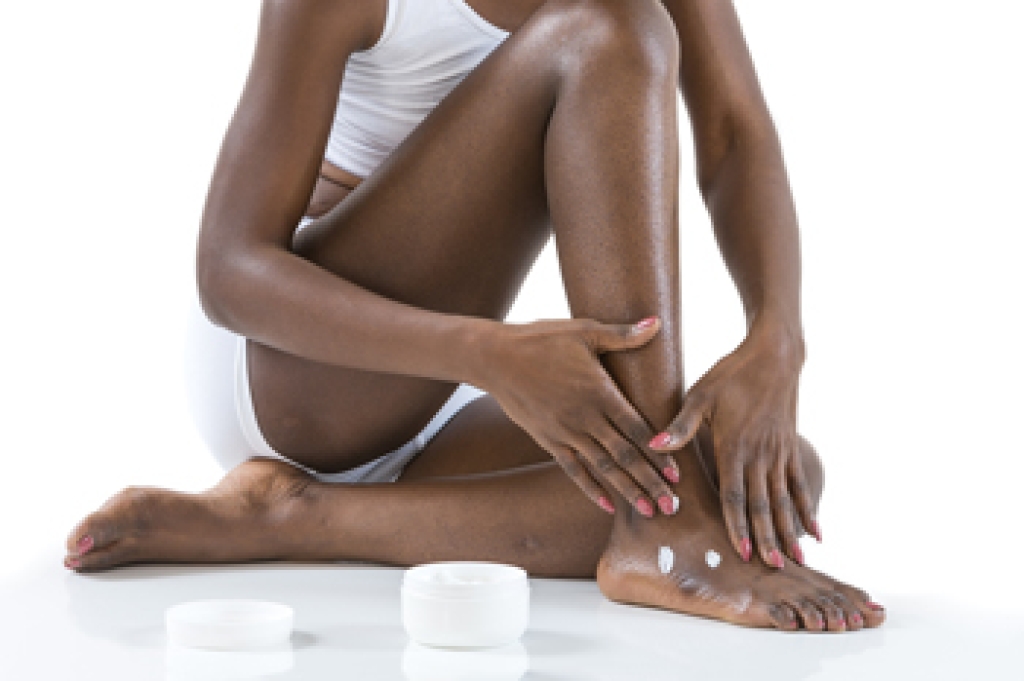
The majority of people wear shoes for most of the day, and this may contribute to taking the feet for granted. An effective method in practicing everyday foot care can start by feeling your feet with your hands. At this point, it may become noticeable how complex the feet are, as there are twenty six bones, numerous tendons, ligaments, and muscles that are in each foot. The feet are designed to withstand pressure from the weight of the body, and the skin is harder on the feet than anywhere else. Additionally, the toenails provide protection against shoes and socks. With this stated, the importance of maintaining and practicing everyday foot care becomes clear. Washing and drying the feet thoroughly may be helpful in preventing athlete's foot. This can be an uncomfortable foot condition that may be avoided when proper measures are taken. Ingrown toenails can cause severe pain and discomfort, and trimming the toenails properly may reduce the risk of getting this foot condition. If you would like more information about good everyday foot care practices, please confer with a podiatrist.
Everyday foot care is very important to prevent infection and other foot ailments. If you need your feet checked, contact Andrew Katz, DPM from Allcare Foothealth Center. Our doctor can provide the care you need to keep you pain-free and on your feet.
Everyday Foot Care
Often, people take care of their bodies, face and hair more so than they do for their feet. But the feet are a very important aspect of our bodies, and one that we should pay more attention to. Without our feet, we would not be able to perform most daily tasks.
It is best to check your feet regularly to make sure there are no new bruises or cuts that you may not have noticed before. For dry feet, moisturizer can easily be a remedy and can be applied as often as necessary to the affected areas. Wearing shoes that fit well can also help you maintain good foot health, as well as making it easier to walk and do daily activities without the stress or pain of ill-fitting shoes, high heels, or even flip flops. Wearing clean socks with closed shoes is important to ensure that sweat and bacteria do not accumulate within the shoe. Clean socks help to prevent Athlete’s foot, fungi problems, bad odors, and can absorb sweat.
If you have any questions, please feel free to contact our office located in Palmdale, CA . We offer the newest diagnostic and treatment technologies for all your foot care needs.
Aching Feet and Ankles From Standing All Day

Many professions require workers to stand on hard surfaces all day. Because of this requirement, it is no wonder their feet and ankles become tired and sore. The muscles and tendons of the feet and legs can become stiff and the tendons throughout the feet can become calcified, which can cause various health problems, including ligament damage, ankle sprains, and more. Standing on your feet all day can put stress on bones in the body and interfere with proper circulation that can lead to clogged arteries and heart disease. It should be uplifting to know there are some simple things that can be done to help alleviate discomfort. These things include taking regular rest breaks, breaking up routine movements by varying tasks throughout the day, and wearing well-fitting, supportive shoes, with good arch support. When the day is done, one can get relief from doing regular foot soaks, massaging the feet, stretching the legs and feet, and elevating them. Seeing a podiatrist can help with providing additional suggestions for how to deal with pressure that builds up in the muscles from prolonged standing.
While working on the feet, it is important to take the proper care of them. For more information about working on your feet, contact Andrew Katz, DPM from Allcare Foothealth Center. Our doctor will treat your foot and ankle needs.
Working on Your Feet
Standing on your feet for long periods of time can cause stress and pain in your feet. Your whole body may experience change in terms of posture, back pain, bunions, callouses and or plantar warts. There are ways to avoid these conditions with proper foot care, smart choices and correct posture.
Positive Changes
Negative heeled shoe – Choosing this shoe type places the heel slightly lower than the ball of the foot. These are great for overall foot health. Find shoes that fit you correctly.
Go barefoot – Our feet were not designed to be enclosed for all hours of the day. Try to periodically expose your feet to air.
Eliminate Pain
Foot Exercises – Performing simple exercises, incorporating yoga and doing stretches are beneficial. This will allow increased blood flow to the area and muscles of the foot.
Achilles tendon – Stretching the foot out flat on the floor will relax the calf muscles and tendon. These exercises can be performed almost anywhere. Make sure you add these exercises to your daily regimen.
With a little bit of this information and knowing more about foot health, you will notice changes. Foot stretches and proper footwear will help with pain and prevent further issues.
If you have any questions please contact our office located in Palmdale, CA . We offer the newest diagnostic and treatment technologies for all your foot and ankle needs.
Osteoarthritis of the Foot and Ankle
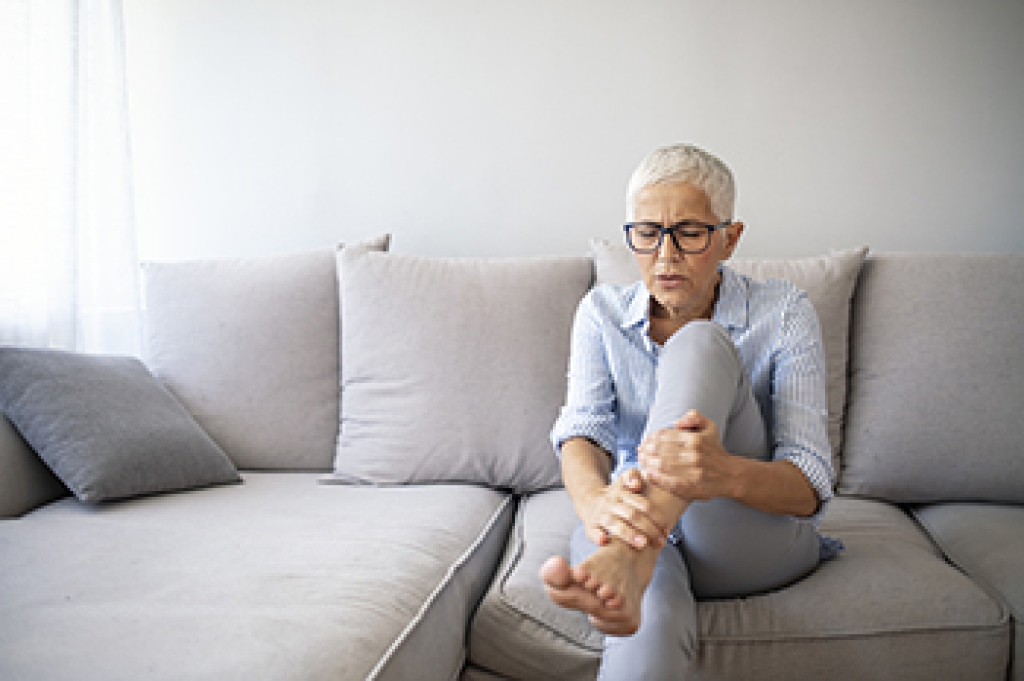
Osteoarthritis is a degenerative joint disease that affects joints in any part of the body, including the ankle and foot. Commonly affected joints of the foot are the ankle, the three joints of the hindfoot, the midfoot, and the big toe. Symptoms of osteoarthritis include stiffness and pain. There may also be swelling, a limited range of motion, bone spur development, and difficulty in walking. When one has osteoarthritis, cartilage, serving as a protective layer for the ends of bones that form joints, gradually wears down. Injury (such as severe sprains and fractures) and abnormal foot structure or mechanics (like flat feet) can lead to osteoarthritis. Other types of arthritis may mimic osteoarthritis, which is why it is important to consult with a podiatrist. Such a professional will provide a proper diagnosis and treatment options for you.
Arthritis can be a difficult condition to live with. If you are seeking treatment, contact Andrew Katz, DPM from Allcare Foothealth Center. Our doctor can provide the care you need to keep you pain-free and on your feet.
Arthritic Foot Care
Arthritis is a term that is commonly used to describe joint pain. The condition itself can occur to anyone of any age, race, or gender, and there are over 100 types of it. Nevertheless, arthritis is more commonly found in women compared to men, and it is also more prevalent in those who are overweight. The causes of arthritis vary depending on which type of arthritis you have. Osteoarthritis for example, is often caused by injury, while rheumatoid arthritis is caused by a misdirected immune system.
Symptoms
- Swelling
- Pain
- Stiffness
- Decreased Range of Motion
Arthritic symptoms range in severity, and they may come and go. Some symptoms stay the same for several years but could potentially get worse with time. Severe cases of arthritis can prevent its sufferers from performing daily activities and make walking difficult.
Risk Factors
- Occupation – Occupations requiring repetitive knee movements have been linked to osteoarthritis
- Obesity – Excess weight can contribute to osteoarthritis development
- Infection – Microbial agents can infect the joints and trigger arthritis
- Joint Injuries – Damage to joints may lead to osteoarthritis
- Age – Risk increases with age
- Gender –Most types are more common in women
- Genetics – Arthritis can be hereditary
If you suspect your arthritis is affecting your feet, it is crucial that you see a podiatrist immediately. Your doctor will be able to address your specific case and help you decide which treatment method is best for you.
If you have any questions please feel free to contact our office located in Palmdale, CA . We offer the newest diagnostic tools and technology to treat your foot and ankle needs.
Blog Archives
- 2025
- 2024
- 2023
- 2022
